This amazing landmark in Granada has once been described as a “pearl set in emeralds” and is derived from Arabic words which translate to “The Red One.”
In this post, You’ll discover a lot more interesting facts about the Alhambra, a magical castle, and a famous palace with a lot of stories to tell.
1. It was built on Roman ruins
Long before it became a palace, the Romans already constructed fortifications on its locations during their occupation of Spain.
With the fall of the Roman empire, the Roman fortifications that were there became a ruin. It wasn’t until the year 889 A.D. that a small fortress was built which replaced the ruins the Romans left behind.
2. Where does the word Alhambra come from?
The word Alhambra derives from the Arabic word “al-Hhjtamrā” which literally translates to “the red one” (female). The complete word was “al-Qal’at al-Ḥamrā.” which actually means “the red fortress.”
The literal translation comes from the fact that the Arabs who discovered it found out that the ruins were made of red clay, which is found all around this part of Spain.
3. Where is the Alhambra located?
The Alhambra, which overlooks the plain of Granada as it descends from the Sierra Nevada, is about 740 meters (2,430 ft) in length by 205 meters (670 ft). It covers a total area of about 142,000 square meters (1,530,000 sq ft) or 35 acres.
It has grown over the centuries from a small fortification on top of the hill to a massive palace that became a palace city.
4. Its first mention was because of a conflict.
In the 9th century, under the rule of Abdullah ibn Muhammad (888-912), there was a major conflict between the Muladies and the Arabs. In a bloody battle, the Muladies defeated the Arabs who fled south and found refuge in the old fortress.

They described the fortress to be reddish and rather small with walls that were not strong enough to label it a castle that could withstand a conquering army.
5. Construction of the Alhamra was started by an Emir.
“The Emirate of Granada” also referred to as the “Nasrid Kingdom of Granada,” was established in 1230 by Muhammad ibn al-Ahmar.
It was the Nasrid Emirs who were responsible for starting the construction and building large parts of the Alhambra Palace. It all started in the mid-13th century when the first Emir renovated the ruins and expanded the fortress’ walls and turned it into a palace.
In an Arabic manuscript we can find information regarding this event:
This year, 1238 Abdallah ibn al-Ahmar climbed to the place called “the Alhambra” inspected it, laid out the foundations of a castle and left someone in charge of its construction…
6. The Alhambra turned into a little city.
We can’t say that the Emirs of the Nasrid Kingdom were humble men. The design they intended for the Alhambra consisted of 6 palaces, two towers, and numerous bathhouses. They also included an irrigation system called “acequias” which removed the need to dependant upon rainwater collection.
The economic and cultural prosperity that the Muslims enjoyed during the reign of the Nasrid Dynasty translated into the Alhambra transforming into a palatine city.
7. The Alhambra had a sophisticated hydraulic system.
Before the Nasrid Emirs transformed an ancient ruin into a majestical palace, there was merely a cistern that didn’t always contain water. People needed to fetch water with buckets and bring them up to the hill the fortress was built upon.
An elaborate hydraulic system, that resembles the system used for the hanging gardens of Babylon, was built over the centuries to supply both the palace and its gardens with water.
8. Muslim rule came to an end.
By 1492, the Christian conquest, which lasted almost 800 years, was concluded and the last Nasrid Emir was exiled to North Africa. This meant the Alhambra now became the Royal Court of Ferdinand and Isabella.
A new palace in Renaissance style was commissioned in 1526 by King Charles V but was never completed because of the Morisco rebellions in Granada. Despite this, it partially remains one of Spain’s most important and well-known examples of Renaissance architecture.
9. The Alhambra was built to be a paradise on earth.
The Muslim Emirs that built the Alhambra created an architectural style using quadrangular buildings, all coming together onto a central courtyard.
One of the most interesting facts about the Alhambra is that all additions made by later Emirs followed this same pattern, connecting each quadrangular room with smaller rooms and passages.
The main theme remained the same as well: “To resemble a paradise on earth.” This is marked by column arcades, fountains that sprinkle water and reflecting pools.
10. Buildings of the Alhambra.
The Alhambra consists out of multiple buildings that were built gradually over the centuries. These include palaces, royal apartments, halls, gardens, pavilions, military barracks, mosques, churches, towers, and forts.
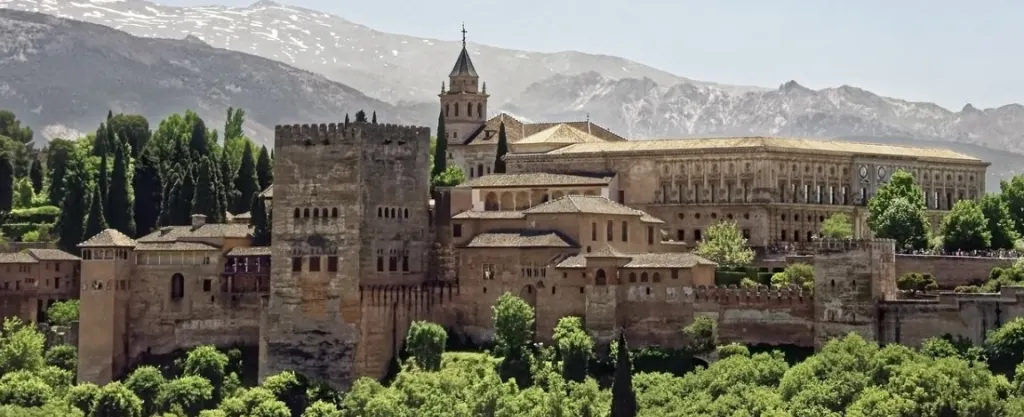
11. Royal Palace
This building is 17 meters high (56 ft) and has a 63-meter (207 ft) square design with an inner patio.

The palace was never finished and has no precedent in renaissance architecture. So it was well ahead of its time.
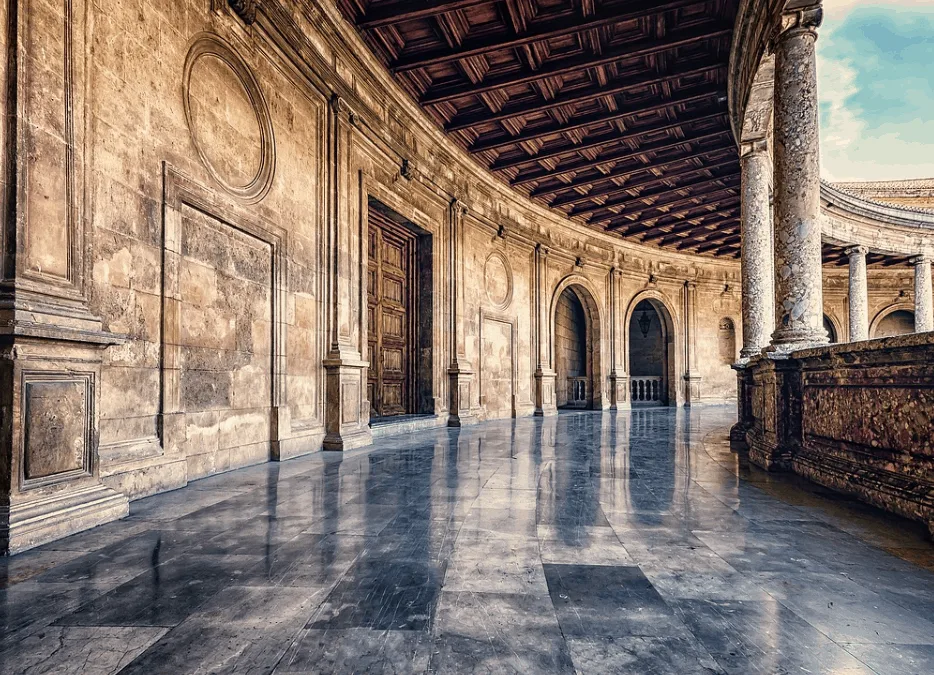
The entire Royal complex consists of 3 parts, the Mexuar (a place to conduct business and administration), the Serallo (a heavily decorated palace), and the Harem (a residential area of the wives and mistresses of the Emir).
12. Court of the Myrtles
This was part of the Royal Palace area and is 42 meters (140 ft) long and 22 meters (74 ft) wide.

In the middle of the Court of the Myrtles (Patio de Los Arrayanes), there’s a large pool with myrtles growing beside it, made out of marble and was used to keep the palace cool. It was also a status symbol as keeping this amount of water in the pool was difficult and expensive.
13. Hall of Ambassadors
The Hall of Ambassadors referred to as “Salón de Los Embajadores” in Spanish, is the largest room in all of the Alhambra.
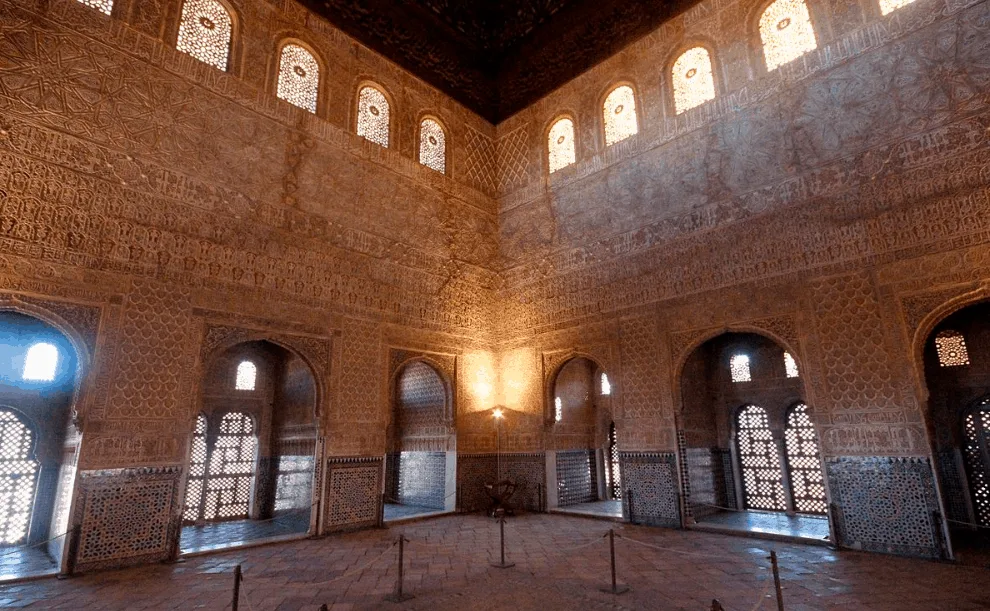
The sides of the room are 12 meters (37 ft) in length and the dome is 23 meters (75 ft) high.
The room itself was used as a welcoming room whenever the Emir had visitors. He would sit on his throne right across the entrance door.
14. Court of the Lions and Fountain
The court of the lions (Patio de Los Leones) is a large courtyard, 35 meters (116 ft) in length and 20 meters (66 ft) wide, surrounded by 124 white marble columns.
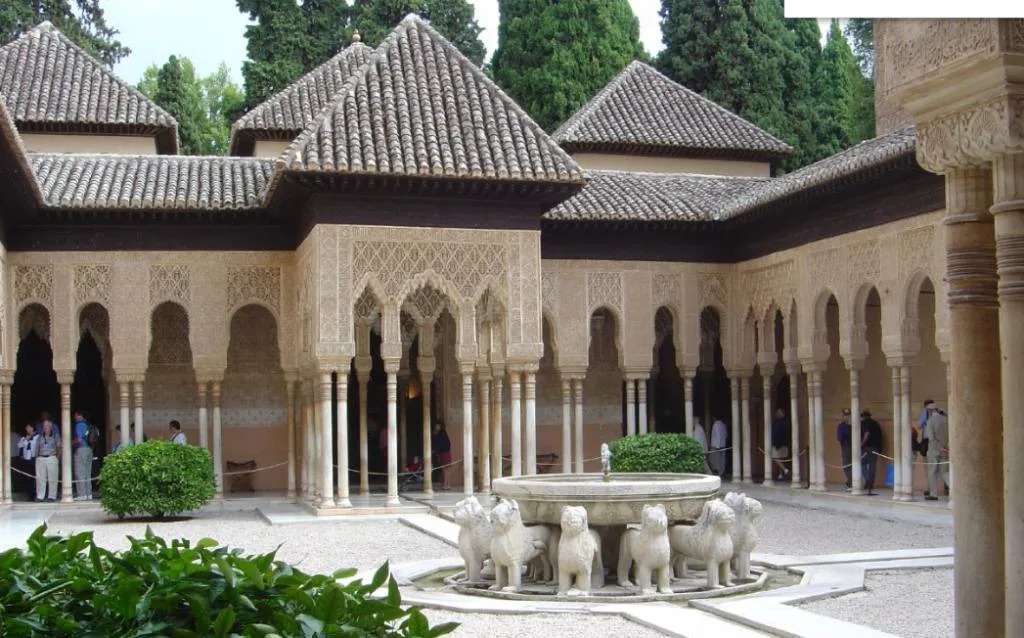
In the middle, there is a fountain decorated with 12 white marble lions. Each hour, another lion would produce water from its mouth.
This section of the Alhambra is a great example of Islamic Moorish architecture and garden design.
15. Hall of the Abencerrajes
One of the most remarkable rooms in the Alhambra is the Hall of the Abencerrajes. It got its name from a legend that tells the story of the entire family of Abencerrajes being murdered in this very room.
Apparently, the Sultan discovered one of the family members had fallen in love with one of the women of the Royal family and got in caught in the act, making him plot his gruesome revenge in one of the most beautiful rooms in the palace.
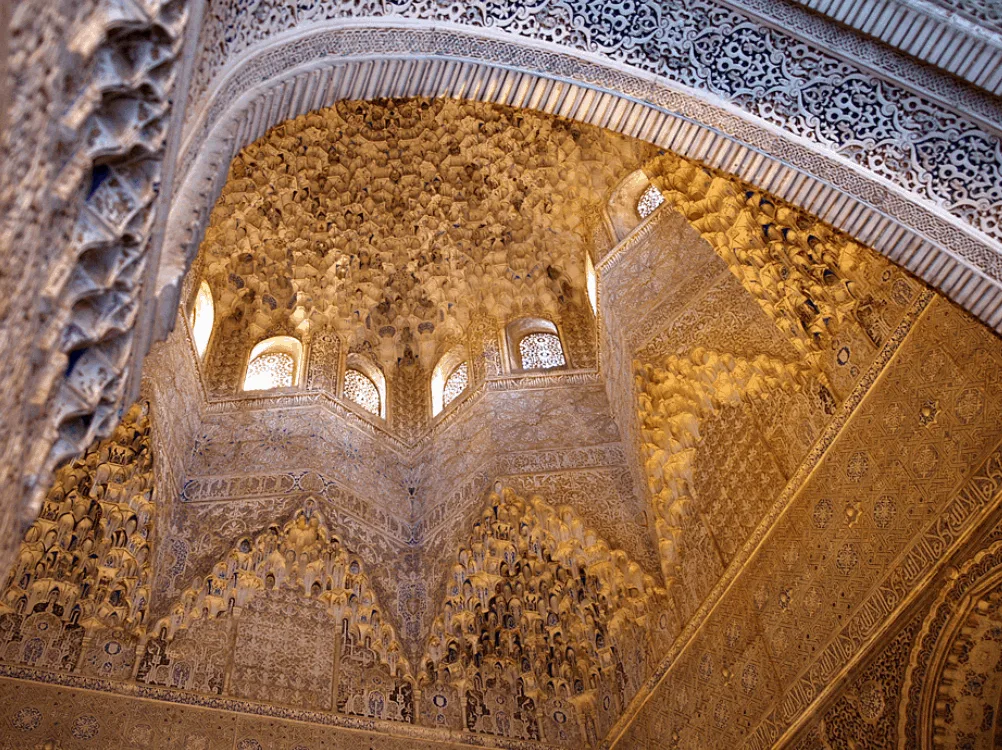
16. The Generalife
One of the most remarkable buildings outside the palace complex is the Generalife, also referred to as “Garden of Arif,” or “Garden of the Architect.”
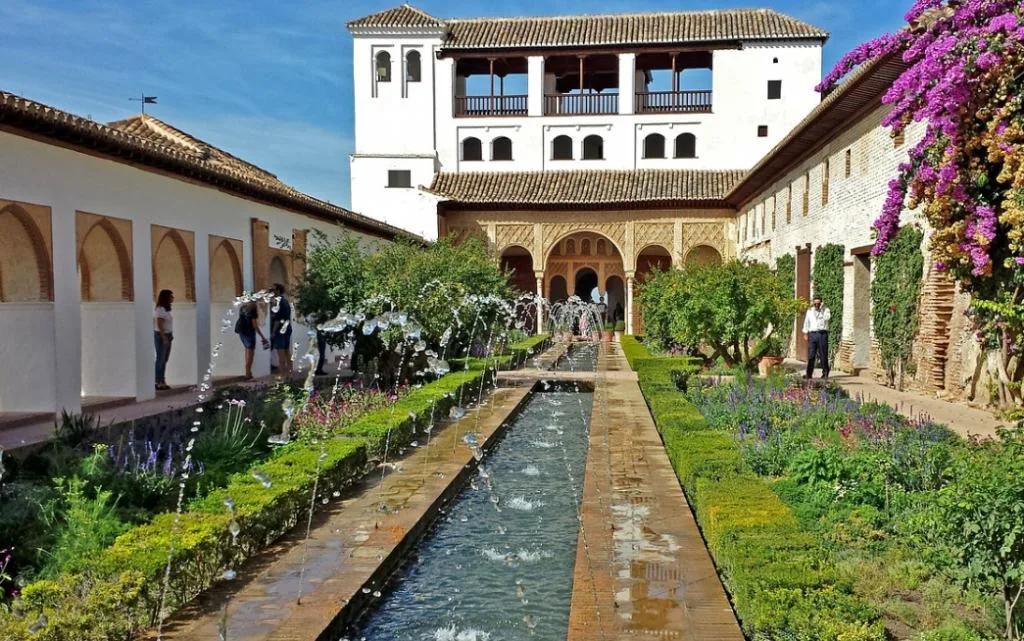
This summer palace or “summer estate” during the reign of the Nasrid Dynasty was built in the early 14th century but has been restored multiple times over the centuries.
The current gardens were built in 1931 and completed in 1951. There used to be a pathway that connected the Generalife to the Alhambra over a ravine, but it’s now separated by it.
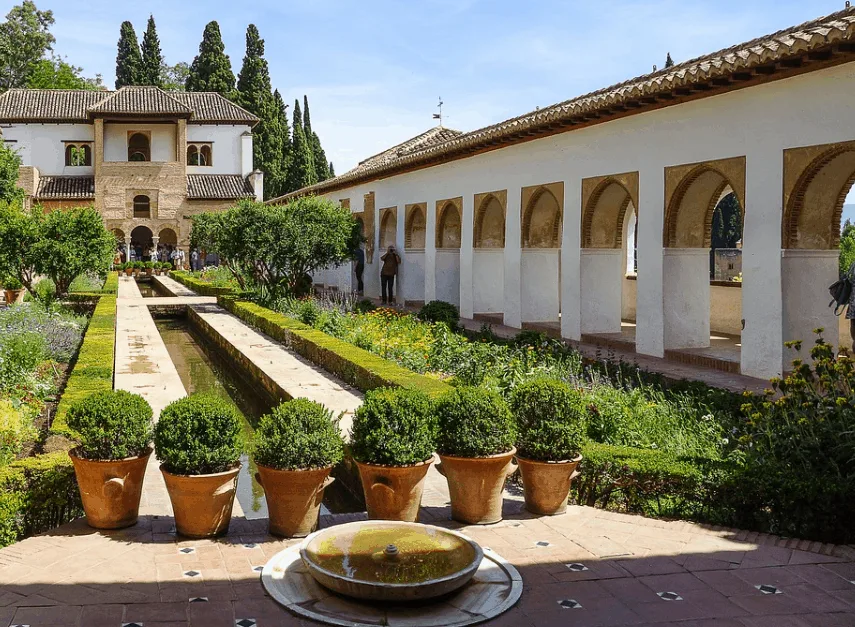
17. The tiles in the Alhambra are remarkable.
Studies have shown that the tiles used in the Alhambra contain most of the 17 mathematically possible wallpaper groups, a mathematical classification of a two-dimensional repetitive pattern. Some claim that even all of them are used.
If that’s true, this would have been a very unique achievement in world architecture. Some doubt though if all 17 can be found.
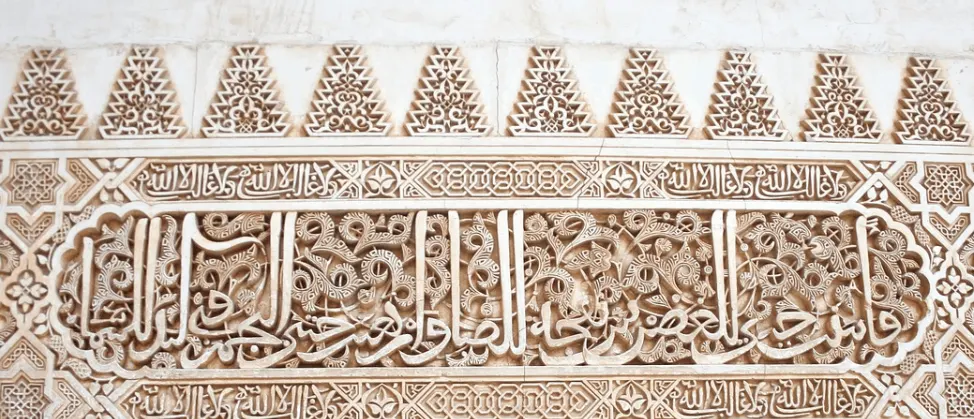
18. Almost a wonder of the world.
The Alhambra is a UNESCO World Heritage Site and this includes all the buildings inside the complex, even the ones that aren’t directly integrated such as the Generalife.
In 2007, the voting of the 7 new wonders of the world ended and the Alhambra made it to the shortlist but was unfortunately not selected.


Leave a comment
You must be logged in to post a comment.